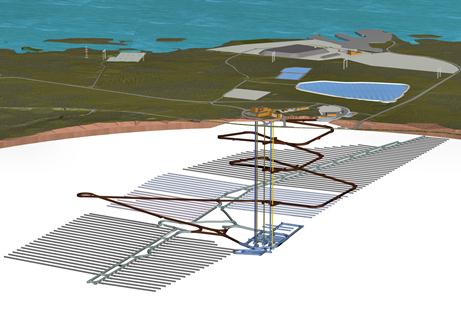One of the biggest problems with nuclear power is disposing of the spent nuclear fuel rods. All of the cooing pools in all the U.S. reactors are filling rapidly and many will be full in a few years. There is a movement for temporary dry cask storage onsite at the nuclear power stations but this will require a massive investment. In addition the current design of dry casks needs to be improved. The U.S. does not have a permanent geological repository for spent nuclear fuel since the cancellation of the Yucca Mountain project in 2009. Other nuclear power nations have the same problem with a lack of permanent geological repositories for their spent nuclear fuel. Finland is moving ahead with plans for a permanent repository of their own.
Posiva is a waste management firm that is owned by two Finnish utilities which operate nuclear power reactors. In 2001, a possible repository site was indentified in Olkiluoto in the city of Eurajoki was selected. The Finnish government issue a “decision in principle” in 2001 for the creation of a repository. In December of 2012, Posiva submitted an application to the Finnish Ministry of Employment and the Economy for the creation of a permanent geological repository for the spent nuclear fuel generated by the two utilities that own Posiva. The Finnish government agency that regulated radiation and nuclear safety (STUK) is backing the new waste disposal facility.
STUK Inspector Jussi Heinonen said “We have already assessed that the operational and long-term safety of the nuclear waste facility are on a sufficiently high level for granting the construction licence. This is a new type of facility, which is why the appropriate approach is to progress in phases and, at the same time, assess and elaborate the designing of the facility on the basis of the accumulated knowledge. For example, we will gain more detailed knowledge about the local characteristics of rock at the final disposal depth once the construction of the facility begins.”
Svensk Karnbranslehantering AB (SKB) is a Swedish spent nuclear fuel management company. SKB commented favorably on the Posiva project, saying that the plan was similar to a geological repository that SKB is working on. The SKB President said that SKB and Posiva are working closely together on their repository projects.
The Finnish government will make a final decision on the Posiva waste encapsulation facility and geological repository construction license after considering comment from STUK and other stakeholders. Posiva noted that strong support from STUK will help them get a license for construction. They will also need to get a license for operating the facility before they can begin to sequester spent nuclear fuel underground. They expect to be ready to apply for an operating license around 2020. Posiva hopes to operate the facility for at least a century with little danger of radioactive materials escaping.
I hope that the Finnish repository project is successful and that they are able to dispose of their spent nuclear fuel. I think that a century is far too long for reasonable projects about energy needs and energy technology. It is likely that sustainable terrestrial sources will be widely available and inexpensive. Nuclear fusion and/or solar energy from satellites may be available. Power from nuclear fission is not a safe, easy or cheap way to generate electricity and should be retired throughout the world as quickly as possible.
Artist’s concept of Olkiluoto repository:






